Training a stubborn dog can be a rewarding yet challenging endeavor. It requires patience, consistency, and a deep understanding of your canine companion’s behavior. In this comprehensive guide, we will explore proven methods and expert tips on how to train a stubborn dog effectively. Whether you’re dealing with a headstrong puppy or an adult dog with behavioral issues, these techniques will help you build a strong and harmonious relationship with your furry friend.
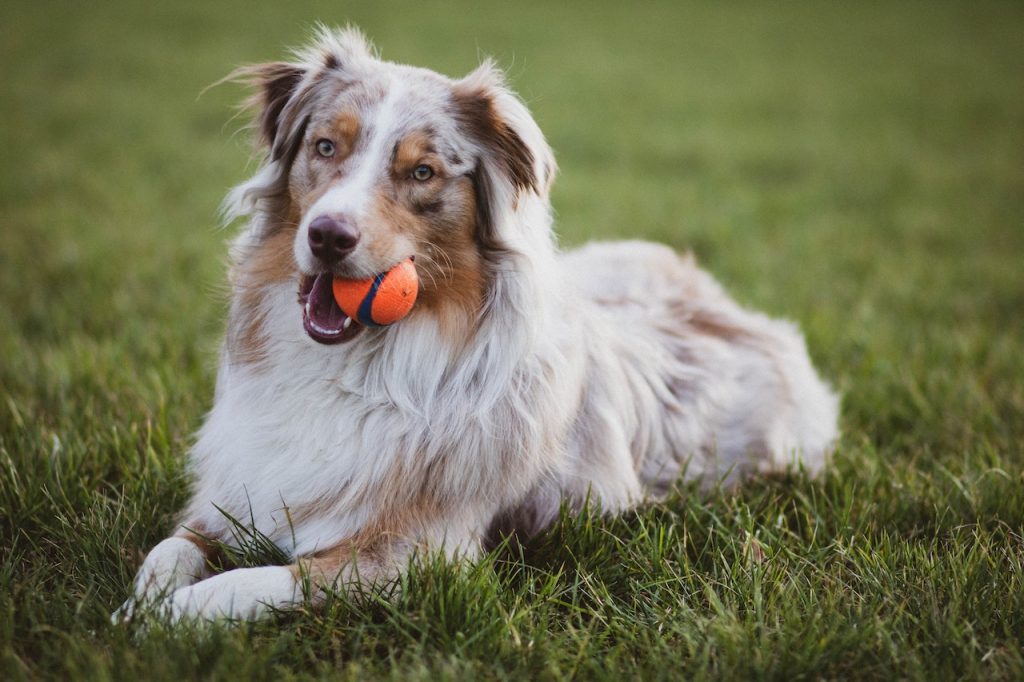
How to Train a Stubborn Dog
Training a stubborn dog begins with understanding the fundamentals. Dogs are intelligent creatures, but they have their unique personalities and temperaments. To effectively train your stubborn dog, you need to consider these key points:
- Patience: Be prepared for gradual progress. Stubborn dogs may take longer to learn new commands.
- Consistency: Establish clear rules and routines. Consistency in your commands and expectations is essential.
- Positive Reinforcement: Reward-based training is highly effective. Use treats, praise, and affection to motivate and reinforce good behavior.
- Avoid Punishment: Punishing your dog can lead to fear and aggression. Focus on positive methods to encourage learning.
- Start Early: Begin training as early as possible. Puppies are more receptive to learning, but older dogs can also be trained.
The Importance of Positive Reinforcement
Positive reinforcement is a cornerstone of effective dog training. It involves rewarding your dog for exhibiting desired behavior. Here’s how to implement it:
- Treats: Use small, tasty treats as rewards. Treat your dog immediately after they follow a command correctly.
- Praise: Offer verbal praise in a cheerful tone. Dogs thrive on hearing their owners’ approval.
- Affection: Petting and cuddling are powerful rewards. Physical affection reinforces your bond.
- Consistency: Always reward the same behavior. This helps your dog associate the action with the reward.
Consistency is Key
Consistency is vital in dog training. Your dog needs to understand what’s expected of them at all times. Here’s how to maintain consistency:
- Use the Same Commands: Stick to a set of consistent commands for each behavior.
- House Rules: Ensure everyone in your household follows the same rules. Inconsistency can confuse your dog.
- Timing: Reward or correct behavior immediately. Delayed responses can confuse your dog.
- Routine: Establish a daily routine for meals, walks, and training sessions. Dogs thrive on predictability.
Understanding Your Dog’s Breed
Different dog breeds have distinct characteristics and tendencies. Understanding your dog’s breed can help you tailor your training methods:
- Research: Learn about your dog’s breed traits, such as energy levels and temperament.
- Adapt: Adjust your training techniques to align with your dog’s breed-specific needs.
- Be Patient: Some breeds may require more time and repetition to learn.
Socialization Matters
Socialization is crucial for all dogs, especially for stubborn ones. It helps your dog become well-adjusted and confident. Here’s how to socialize your dog effectively:
- Early Start: Begin socializing your puppy as early as possible.
- Exposure: Introduce your dog to various people, animals, and environments.
- Positive Experiences: Ensure that socialization experiences are positive and free of fear.
- Gradual Exposure: If your dog is fearful, start with less intimidating situations and gradually progress.
Leash Training
Leash training is essential for both your dog’s safety and your enjoyment during walks. Here’s how to leash train your stubborn dog:
- Positive Association: Make your dog associate the leash with positive experiences, like treats and outdoor fun.
- Loose Leash: Teach your dog to walk with a loose leash without pulling.
- Consistency: Be consistent with leash rules. If your dog pulls, stop walking until they calm down.
- Reward Calmness: Reward your dog for walking calmly beside you.
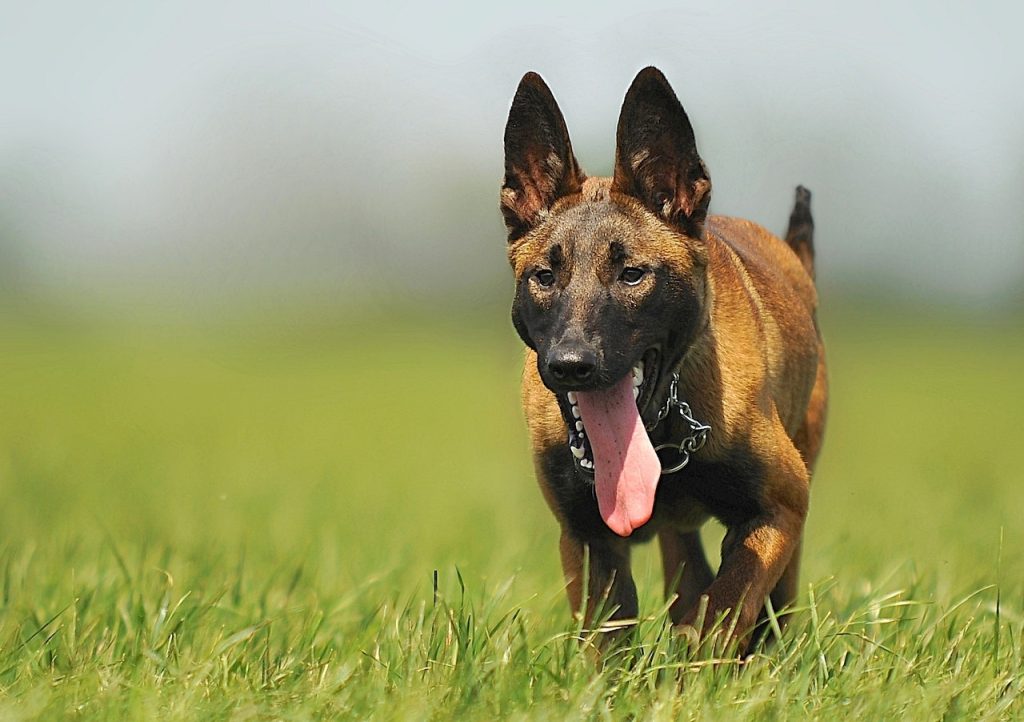
Crate Training
Crate training provides your dog with a safe and secure space, which can be especially helpful for stubborn dogs. Follow these steps for effective crate training:
- Choose the Right Crate: Select an appropriately sized crate that allows your dog to stand, turn, and lie down comfortably.
- Positive Association: Make the crate a pleasant place by placing toys, treats, and bedding inside.
- Gradual Introduction: Introduce your dog to the crate gradually, starting with short periods and gradually extending them.
- Avoid Punishment: Never use the crate as a form of punishment.
Clicker Training
Clicker training is a popular method that uses a clicker to mark desired behavior. Here’s how to incorporate clicker training into your routine:
- Get a Clicker: Purchase a clicker designed for dog training.
- Associate Click with Treats: Click the clicker and immediately give your dog a treat. This helps your dog connect the sound with rewards.
- Clear Timing: Click at the exact moment your dog performs the desired behavior.
- Consistency: Use the clicker consistently for specific actions.
Obedience Classes
If you’re struggling to train your stubborn dog on your own, consider enrolling in obedience classes. Professional trainers can provide expert guidance and support. Here’s what to expect:
- Structured Learning: Obedience classes offer structured lessons and a controlled environment for training.
- Socialization: Your dog will have the opportunity to interact with other dogs and people.
- Expert Advice: Trainers can address specific behavioral issues and provide tailored solutions.
- Consistency: Training is consistent and reinforced during each class.
Problem Solving
Stubborn dogs may exhibit behavioral issues that require attention. Here’s how to address common problems:
- Aggression: Consult a professional trainer or behaviorist for aggressive behavior.
- Fear and Anxiety: Use desensitization and counter-conditioning techniques to reduce fear and anxiety.
- Excessive Barking: Identify the cause of barking and address it through training.
- Destructive Chewing: Provide appropriate chew toys and discourage destructive chewing.
Building Trust
Training is not just about obedience; it’s also about building trust and a strong bond with your dog. Here’s how to foster that connection:
- Spend Quality Time: Dedicate time to play, cuddle, and relax with your dog.
- Consistent Training: Use training sessions as bonding opportunities.
- Affection: Show affection regularly to reinforce the bond.
- Trust-Building Exercises: Engage in trust-building exercises like the “leave it” command.
Exercise and Mental Stimulation
A tired dog is less likely to exhibit stubborn behavior. Ensure your dog gets enough physical and mental stimulation:
- Daily Walks: Regular walks provide exercise and mental enrichment.
- Interactive Toys: Use puzzle toys to challenge your dog’s problem-solving skills.
- Training Challenges: Teach new tricks or commands to keep your dog engaged.
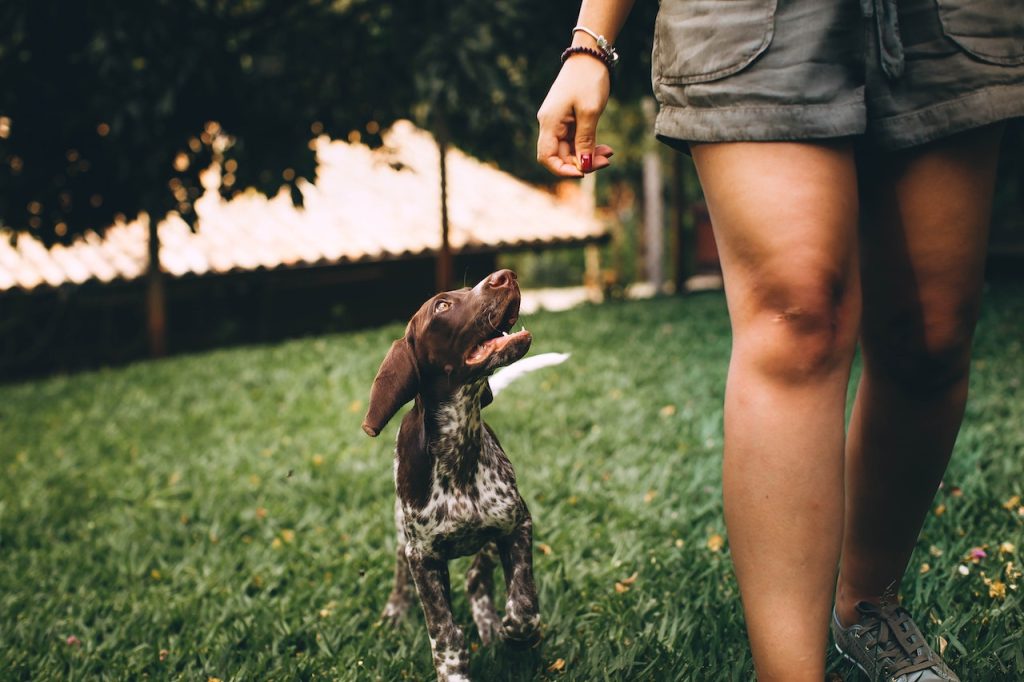
Training Games
Incorporate training into playtime to make it enjoyable for both you and your dog. Here are some training games to try:
- Hide and Seek: Hide and let your dog find you, rewarding them when they do.
- Fetch: Use fetch as an opportunity to practice recall commands.
- Tug of War: Teach your dog “drop it” and “take it” during a game of tug of war.
- Treasure Hunt: Hide treats around the house or yard and encourage your dog to find them.
Patience and Persistence
Training a stubborn dog can be frustrating, but persistence is key. Remember these tips:
- Stay Calm: Dogs can sense your frustration. Stay patient and calm during training.
- Take Breaks: If you or your dog becomes frustrated, take a break and resume later.
- Celebrate Small Wins: Acknowledge and celebrate every small achievement.
- Seek Support: Consult a professional trainer if you’re struggling.
Handling Aggression
If your dog displays aggression, it’s essential to seek professional help immediately. Aggressive behavior can be dangerous and should be addressed by a trained expert.
- Safety First: Ensure the safety of yourself and others. Restrict access to potential triggers.
- Consult a Behaviorist: Find a certified animal behaviorist with experience in aggression cases.
- Training and Management: A behaviorist will develop a customized plan for addressing aggression, which may include training and management strategies.
Dealing with Fear and Anxiety
Fear and anxiety can contribute to stubborn behavior. Here’s how to help your dog overcome these emotions:
- Identify Triggers: Identify what causes fear or anxiety in your dog.
- Desensitization: Gradually expose your dog to triggers in a controlled and positive way.
- Counter-Conditioning: Pair triggers with positive experiences to change your dog’s emotional response.
- Consult a Professional: If fear and anxiety persist, consult a veterinarian or behaviorist for guidance.
Housetraining Tips
Housetraining can be challenging, especially with stubborn dogs. Follow these tips for successful housetraining:
- Establish a Schedule: Take your dog out at consistent times, especially after eating, drinking, or waking up.
- Supervise Closely: Watch your dog closely indoors and be ready to take them outside if they show signs of needing to go.
- Use Positive Reinforcement: Praise and reward your dog for going potty outside.
- Be Patient: Accidents will happen. Stay patient and avoid scolding your dog for mistakes.
Advanced Commands
Once your dog masters basic commands, consider teaching them advanced ones. These commands can challenge your dog’s intelligence and obedience:
- Stay: Teach your dog to stay in place until released.
- Roll Over: A fun trick that showcases your dog’s agility.
- Speak and Quiet: Teach your dog to bark and be quiet on command.
- Fetch Specific Items: Train your dog to fetch specific objects by name.
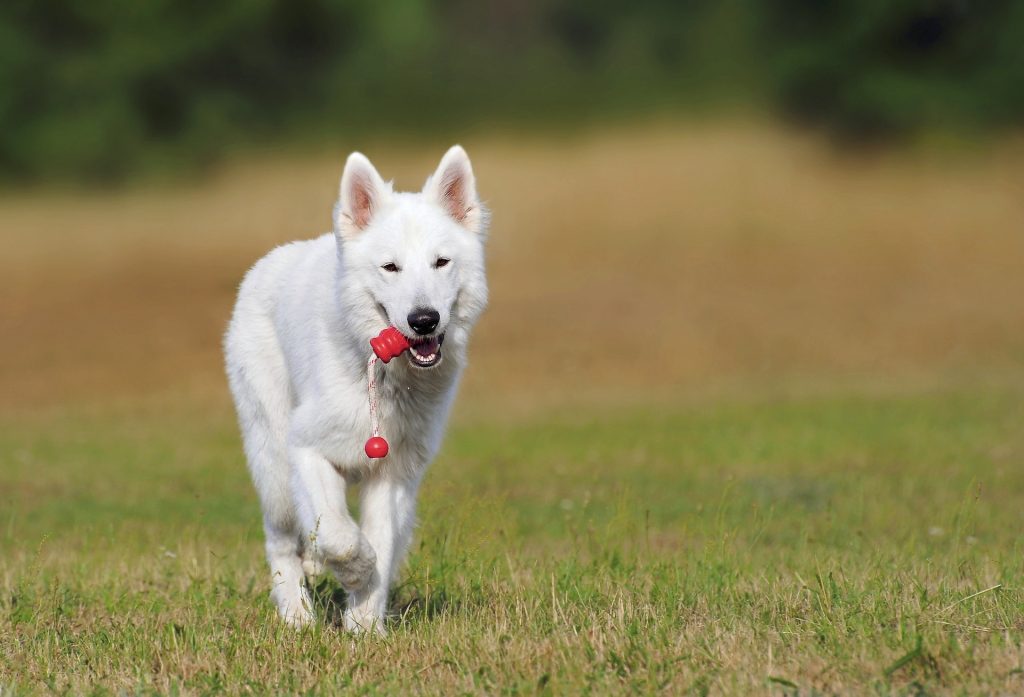
Integrating Training into Daily Life
Consistency is essential for long-term success in training your stubborn dog. Integrate training into your daily life with these tips:
- Everyday Commands: Use basic commands like “sit” and “stay” during daily activities.
- Reinforcement: Continuously reinforce good behavior.
- Challenge: Keep challenging your dog with new commands and tricks.
- Enjoy the Journey: Training is an ongoing process that deepens your bond with your dog.
Training Gear and Tools
Selecting the right training gear and tools can make a significant difference in your dog’s training experience. Here’s what you need to know:
- Collars and Harnesses: Choose a collar or harness that fits comfortably and doesn’t cause discomfort.
- Leashes: Opt for a leash that suits your training needs, whether it’s a standard leash, retractable leash, or long line.
- Treats and Rewards: Use high-quality treats that your dog finds enticing.
- Training Clicker: Invest in a training clicker for clicker training.
Common Training Mistakes
Avoid these common training mistakes to ensure a positive and effective training experience for your dog:
- Inconsistency: Changing the rules or commands confuses your dog.
- Lack of Patience: Impatience can hinder your dog’s progress.
- Negative Reinforcement: Avoid using fear or physical punishment in training.
- Skipping Socialization: Proper socialization is crucial for your dog’s well-being.
- Overlooking Exercise: A tired dog is more cooperative in training.
Frequently Asked Questions
Expert Insights
Q: How long does it take to train a stubborn dog?
A: The time it takes to train a stubborn dog varies. Some dogs may respond quickly, while others may require months of consistent training. Patience is key.
Q: Can I train an older dog that is already set in its ways?
A: Yes, you can train an older dog. While it may take more time and effort, older dogs can still learn new tricks and behaviors with patience and consistency.
Q: What should I do if my dog refuses to listen during training?
A: If your dog refuses to listen, take a step back and reevaluate your training methods. Seek professional guidance if needed.
Q: Is it possible to train aggression out of a dog?
A: Aggression in dogs can be challenging to address and should be handled by a professional behaviorist or trainer experienced in aggression cases.
Q: Should I hire a professional trainer for my stubborn dog?
A: If you’re struggling with training or dealing with behavioral issues, hiring a professional trainer is a wise decision. They can provide expert guidance and tailored solutions.
Q: Can I use an e-collar to train my stubborn dog?
A: E-collars should only be used under the guidance of a professional trainer. Using them improperly can cause harm to your dog and exacerbate behavioral issues.
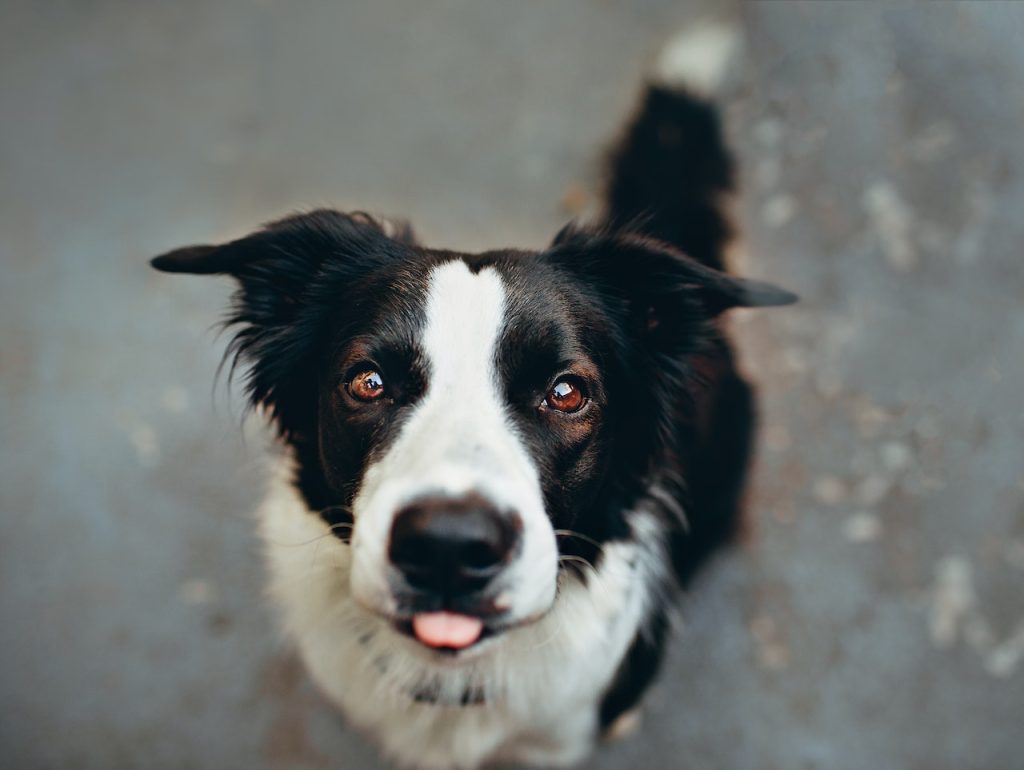
Training a stubborn dog can be a challenging but ultimately rewarding experience. By following the proven methods and expert tips outlined in this guide, you can effectively train your dog and build a strong, loving bond. Remember, patience, consistency, and positive reinforcement are the keys to success. Your well-trained and happy dog will be a testament to your dedication and love.
Additional Resources
If you’re interested in delving deeper into dog training, consider exploring the following resources:
- American Kennel Club (AKC): Offers training tips, articles, and breed-specific information.
- Association of Professional Dog Trainers (APDT): Provides resources and a directory of certified trainers.
Read more blog posts!



